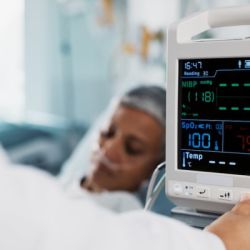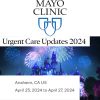ICU Management & Practice, ICU Volume 13 - Issue 1 - Spring 2013
Policies for the management and control of risks associated with healthcare constitute one of the priorities of the modern health systems. Like most European countries, the Ministry of Health in Italy has recognised the importance of assessing quality and safety on all levels of the system, taking into account patient expectations and enhancing the role and responsibility of health professionals.
Through the establishment of a ministerial working group dedicated to patient safety, there have been many clinical governance initiatives, the most significant being the Information System for Monitoring of Sentinel Events (SIMES). SIMES allows the collection of information on the spread of sentinel events in healthcare facilities needed for the analysis of contributing factors and determinants, and develops specific recommendations for the safety of patients. The major care priorities are identified and the systematic use of best practices for patient safety is promoted.
Operating Room Safety
Particular attention has been placed on safety in the operating
room in the light of guidance and awareness initiatives launched by the WHO in
the World Alliance for Patient Safety and the Safe Surgery Saves Lives
programme in particular. Surgical activity, the volume of surgical activity and
the inherent complexity of all procedures related to it, even the simplest, is one of the areas with the highest probability of error.
The many critical points of each surgical procedure have the potential to cause
serious harm to the patient and that is why safety in the operating room is a
challenge and a priority for health systems and the management. Using risk assessment
we can implement the best solutions for organisational and logistical security
so that they constitute an effective barrier system for errors.
In
Italy, operating room safety is often the centre of attention due to the
occurrence of particularly severe adverse events. In Sicily, for example, the
emergence of a number of incidents in the operating room, in different contexts
and over a relatively short period of time, led to the establishment of a
regional commission of experts for a large scale verification of safety procedures.
The survey was completed in a few months and resulted in the closure of several
facilities operating without safety requirements. This confirmed the role of
the organisation and maintenance in causing adverse events and has led to increased
risk control and dissemination of a safety culture. The next step is a special plan
for modernisation and increase the safety of the medical devices.
The Italian Ministry of Health considered it essential to launch a
major campaign to raise awareness among health professionals on the issue of
safe surgery. This was done through the creation of a manual for safety in the
operating theatre derived from the WHO Guidelines for Surgery and centred on 16
goals for the safety of the perioperative process including 10 derived from the
cited WHO document.
The checklist should not only
allow for the verification of the process and a reminder mnemonic for the
proper performance of a particular task, but also facilitate communication
within the team, especially with regard to critical information about the
patient and intervention, with better identification of roles within the team
and a more optimal exchange of critical information regarding the clinical
condition of the patient and the type of work that he is going to perform. The
Ministry has also recommended that the health facilities in the National Health
Service also take into account the recommendations of the WHO. The checklist
will be adapted locally based on the characteristics of each healthcare
organisation or particular procedures used. Altered versions could include the
addition of further control or elimination of items of routine use and
therefore unnecessary.
Promoting the Checklist
In order to raise awareness among health professionals and promote
the use of the checklist, the Ministry of Health has developed some explanatory
videos to explain the correct procedures for carrying out checks during the
course of surgery.
A working group composed of influential figures in the Italian health system took the WHO video as a starting point along with other similar experiences in different countries and adapted the scenes and content to the Italian situation. Particular attention was paid to the choice of surgical procedures on which to apply the checklist, to ensure they are consistent with the local situation.
In order to create a tool that can positively influence the
behaviour of the operating team it was also decided to include testimonials
from prestigious figures in the national health system, including presidents and
members of scientific societies and organisations for
the protection of patients: Francesco Basile, Dean of the Faculty of Medicine,
University of Catania; Louis Conte, Italian Hospital Surgeons Association
(ACOI); Giorgio Della Rocca, the Italian Society of Anaesthesia and Intensive
Care (SIAARTI); Giuseppe Greek, chairman of the Standing Conference of regions
Cittadinanzattiva Tribunal for Patients' Rights; Giuseppe Mancini, President of
Operating Room Nurses (AICO); Barbara Mangiacavalli, Secretary of the Central
Committee of the Federation of Colleges IPASVI; Walter Mazzucco, national
president of the Italian Secretariat of Postgraduate Doctors; Gianluigi
Melott
President of the Italian Society of Surgery
(SIC). Famous faces from the world of culture, Maestro Nicola Piovani and
actress Mariella Lo Giudice created the soundtrack and narrated the video. In
order to facilitate the sharing of the video within the international
scientific community, scenes filmed in the Italian language were captioned in
English.
The ministerial working group also considered strategies to highlight the key role of managers as facilitators of the use of the checklist. At the beginning and end of the video a short presentation was inserted to draw attention to the purpose and the importance of corporate policies of clinical risk management in preventing error. Stefano Cencetti, Director General of the Hospital Policlinico of Modena and Gianfranco Finzi, Medical Director of Presidio dell'Azienza University Hospital S. Orsola Hospital in Bologna and president of the National Association of Doctors of Hospital Management (ANMDO) described the purpose of the initiative. These statements put in proper perspective the role that health managers play in the governance of healthcare organisations and emphasise the importance of the organisational aspects at all stages of surgery in which important decisions are made or activities that require high attention especially in terms of communication between the team members and the exact identification of the tasks assigned to the operators.
The video, made in 2009, was presented to health professionals as
part of a dissemination campaign launched at the annual Risk Management Forum
of Arezzo; one of the main Italian events in training and updating clinical
risk. The key strategy was the involvement of scientific societies including
ANMDO to stress the important role of doctors as facilitators of the adoption
of the checklist.
There
is a risk that the use of a largescale national checklist, although
highlighting sensitivity to the issues of clinical risk, is likely to remain a
bureaucratic formality with no added value for safety. Particular attention has
therefore been paid to the verification of the use of the checklist on a
regional level. This was implemented by the Ministry of Health through a
questionnaire to gather information on the adoption of the manual and checklist
and local training initiatives. The first results of the national survey, although
still incomplete, already show a high level of adherence by all health
facilities across Italy thus confirming the important role that health policies
play in the construction of an error proof system. It is significant that the
ministerial handbook for safety in the operating room and related checklist has
favoured the creation of a national network for safe surgery. Evidence of this
success can be seen through the large number of reports on the theme presented
during the last Risk Management Forum of Arezzo.
For a comprehensive approach to
safety, which covers all aspects of structural, technological and
organisational management, the contribution of the professionals involved is of
paramount importance. Strategic synergy is needed to ensure seemingly minor
aspects, which may be fundamental to the prevention of the error, are not
ignored. A logical system of safety and quality assurance is decisive for the
prevention of error.
In this context, of particular importance is the role of the medical director and medical management. Acting as the pivot and facilitator of the process and as a reference for the establishment of a proactive vision for safety, management can ensure error analysis is used as a tool to learn how the same error can be avoided in the future.


















